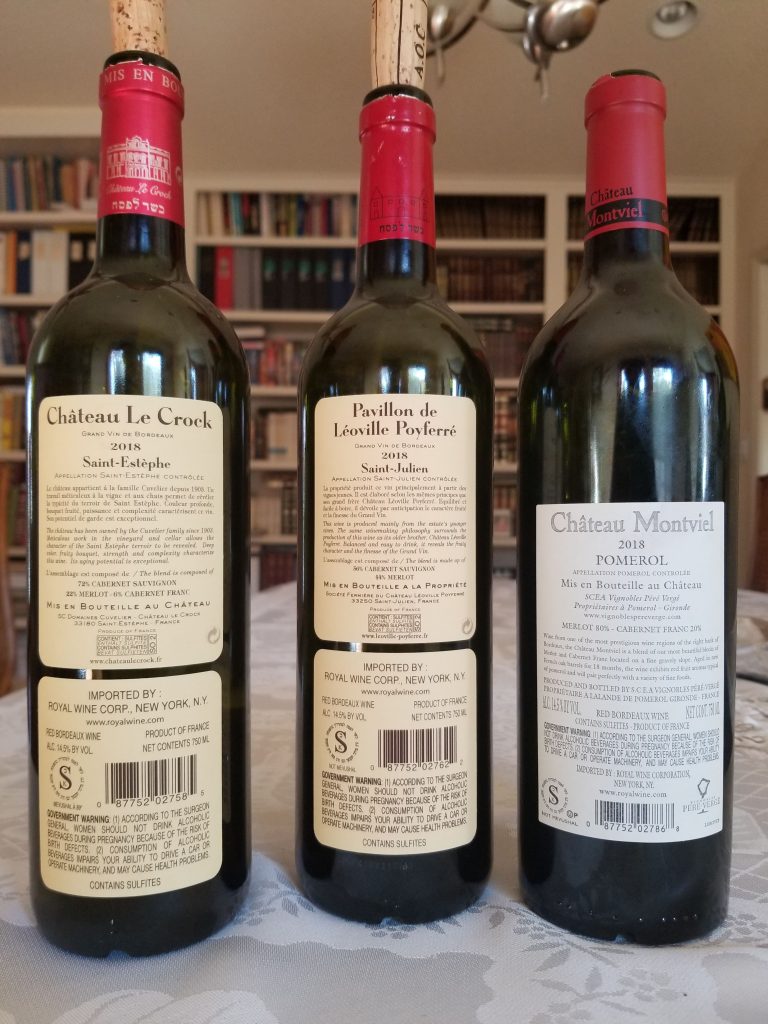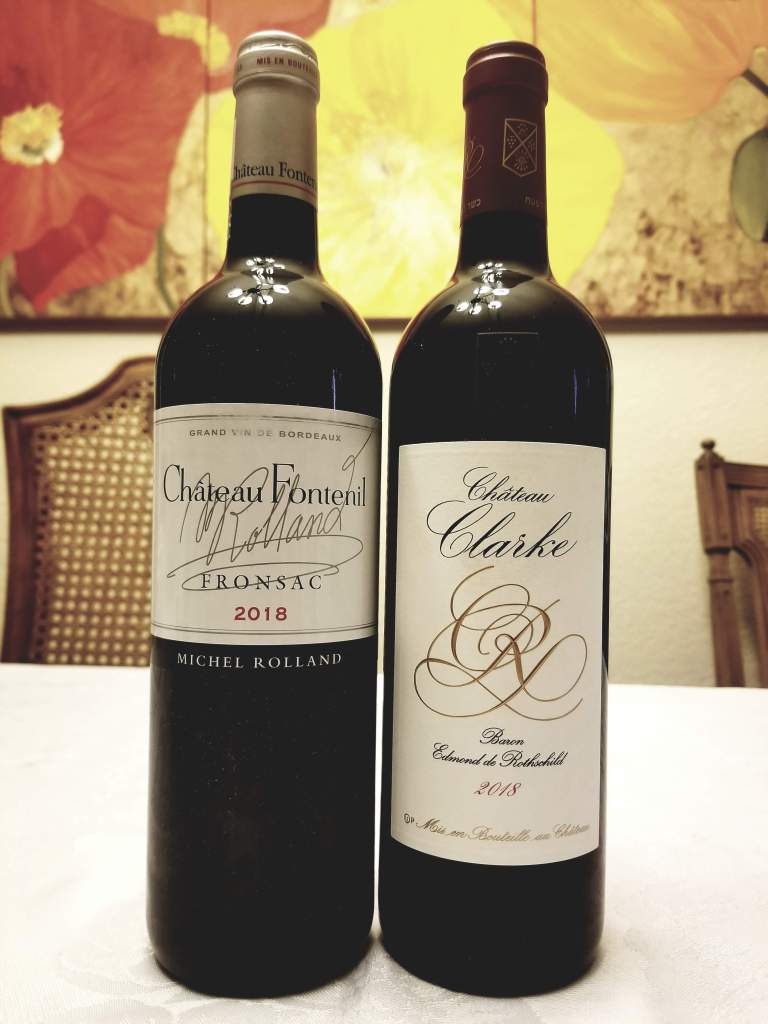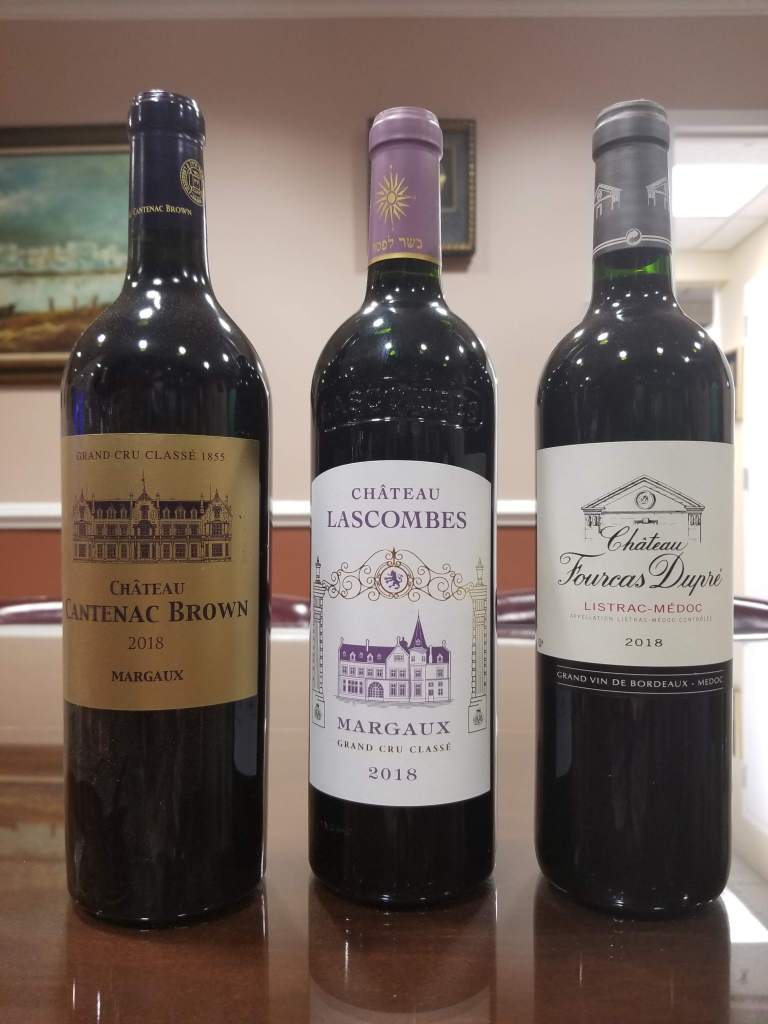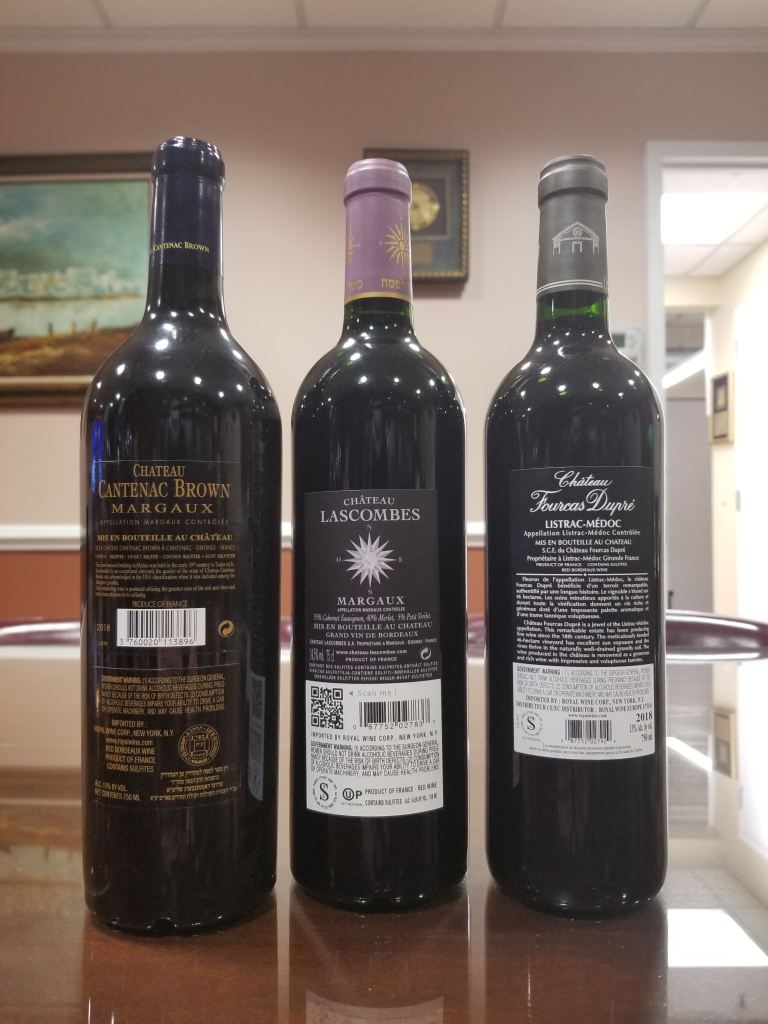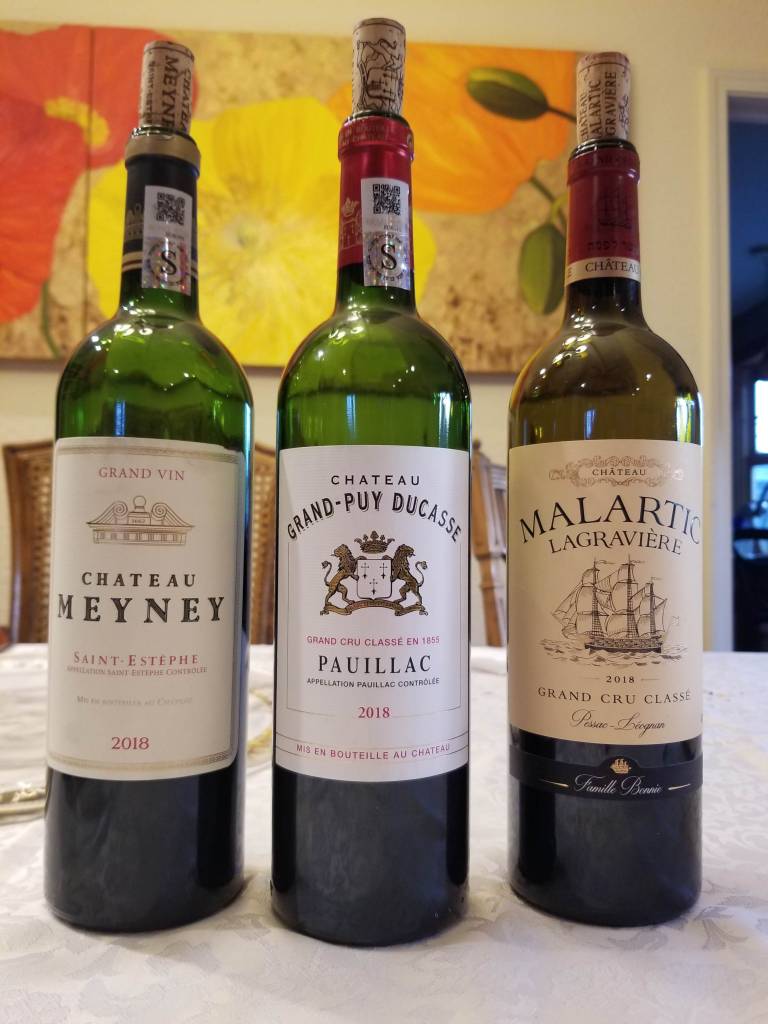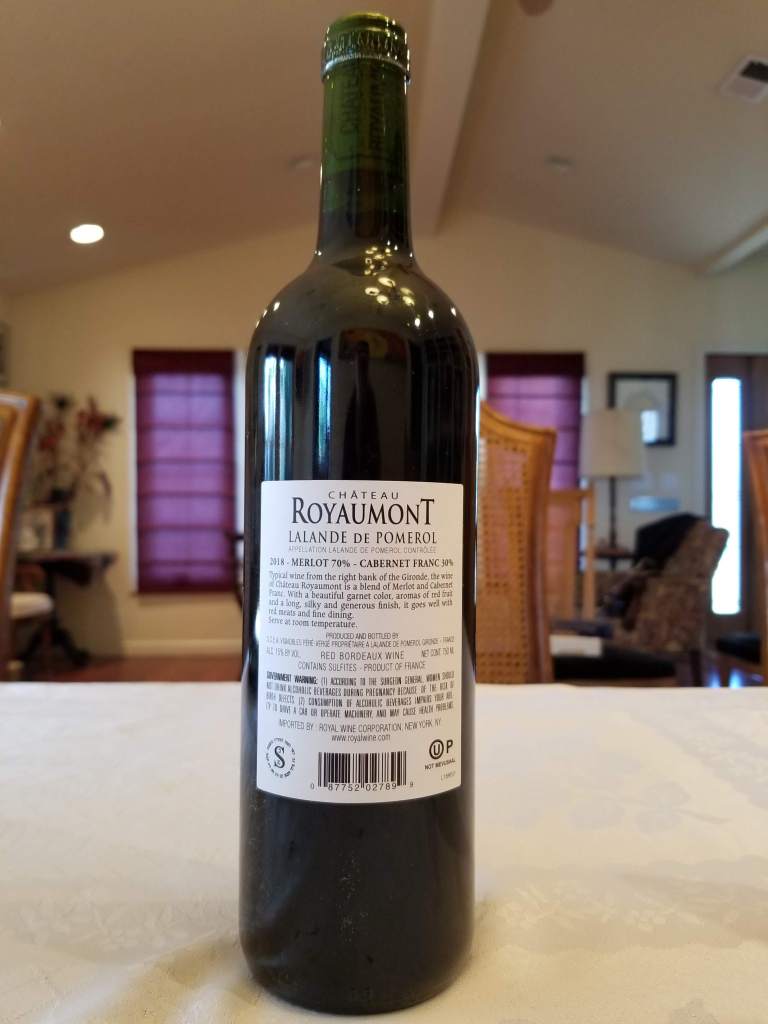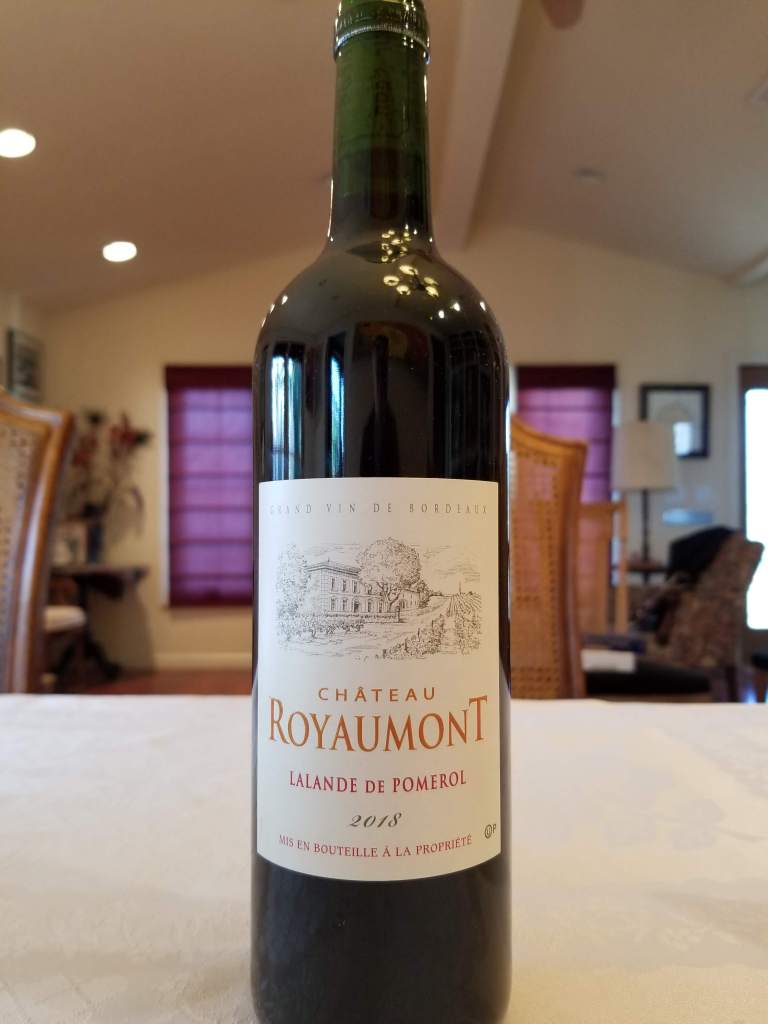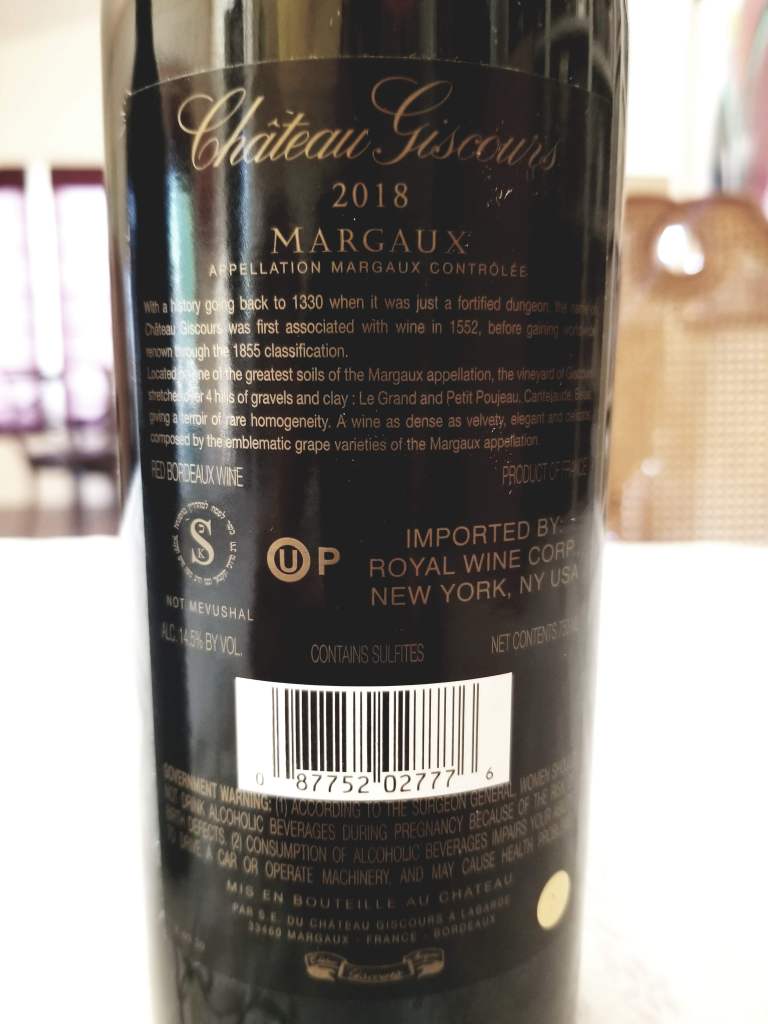Blog Archives
Finishing my tasting of Royal Wine’s 2018 French wines in California
Posted by winemusings
I know some of you are hoping for posts from my trip to France. However, I need to clean-up some missing posts, I have a lot of wine that needed to be posted and now I will do those quickly. After that I will start posting the wines I tasted in France.
So, back in November 2020, I did a tasting at my home to taste the 2018 wines from Royal, at least the ones that were here in the USA at that time. I will skip much of the text that I wrote then, but I will repost all the 2018 notes, to make it complete. Remember, all my notes have tasting dates on them.
In a previous post about the most recent French wines (at that time in 2017) that were arriving on the market – I already spoke about pricing and supply, so there is no need to talk that over again in this post.
While the 2015 and 2016 vintages were ripe, and the 2017 vintage was not ripe at all, the 2018 vintage makes the 2015 ripeness look tame! Now that is a very broad-stroke statement that cannot be used uniformly, but for the most part, go with it!
I see no reason to repeat what Decanter did – so please read this and I will repeat a few highlights below.
For a start, the drought came later in 2018,’ says Marchal, pointing out that early July saw less rain in 2016. ‘But when it came in 2018, it was more abrupt, with the green growth stopping across the whole region at pretty much the same time’. He sees it closer to 2009, but with more density to the fruit. … and high alcohols!
Alcohols will be highest on cooler soils that needed a long time to ripen, so the Côtes, the Satellites, and the cooler parts of St-Emilion have alcohols at 14.5-15%abv and more. I heard of one Cabernet Franc coming in at 16.5%abv, but that is an exception. In earlier-ripening areas, such as Pessac-Léognan and Pomerol, alcohols are likely to be more balanced at 13.5% or 14%abv, as they will have reached full phenolic ripeness earlier.
‘Pessac-Léognan did the best perhaps because it’s an early ripening site,’ said Marie-Laurence Porte of Enosens, ‘so they were able to get grapes in before over-concentration. If you had to wait for phenolic ripeness, that is where things could get difficult’.
The final averages per grape, according to Fabien Faget of Enosens, are Sauvignon Blanc 13.5%abv, Sémillon 12.5%abv, Merlot 14.5%abv, and Cabernet Sauvignon 14%abv’.
Final comments, disclaimer, and warnings
These wines are widely available in the USA, so support your local wine stores folks – they need your help! If you live in a wine-drinking desert, like California, support the online/shipping folks on the side of this blog. They are folks I buy from (as always – I NEVER get a bonus/kickback for your purchases)!
Again, I am just posting the 2018 reds and a couple of other wines that have changed in a good and bad way. My many thanks to Royal Wine for their help in procuring some of these wines. The wine notes follow below – the explanation of my “scores” can be found here:
2018 Les Marronniers Chablis (M) – Score: 88 (QPR: EVEN)
Sadly, as I continue to watch this wine evolve I feel it is not a wine that I will stock up on. This and the 1er Cru, sadly. The reason is that the wine keeps losing acidity as it ages. We opened the wine on Friday afternoon, and even then it had turned, and by Shabbat morning the acidity was far removed from where it was on Friday and that feels further removed from my notes and memories.
This wine is made with native yeasts and as little manipulation as possible. The nose on this wine is beautiful with orange blossom, yellow apple, and rosehip, with lemon curd, and yeasty and creamy notes. The mouth was lovely in the past, at this point, it has moved even further. The mouth on this medium-bodied wine is not as acidic as in the past and it is time to drink, sweet Meyer lemon, quince, pie crust, with Anjou pear, and nice peach. The finish is a bit short, with baked pear and apple, cinnamon, nutmeg, some mineral, and now the fruit is showing sweeter. Drink now. (tasted March 2021)
2018 Les Marronniers Chablis, Premier Cru, Cote de Jouan – Score: 88 (QPR: POOR)
Sadly, as I continue to watch this wine evolve I feel it is not a wine that I will stock up on. This and the 1er Cru, sadly. The reason is that the wine keeps losing acidity as it ages. We opened the wine on Friday afternoon, and even then it had turned, and by Shabbat morning the acidity was far removed from where it was on Friday and that feels further removed from my notes and memories.
The nose on this wine still shows floral notes, starting with rosehip and yellow flowers, followed by some minerals, slate, blossom water, apple, and smoke. The mouth on this medium-bodied wine is where things have gone wrong, with a bit of weight at this time, yellow apple, some citrus, Asian Pear, nice peach/apricot, Orange pith, hints of nectarines and orange. Sadly, as I state above the acidity slows early and leaves in a few hours, so while I loved the wine at release, it is not for long holding. Drink now. (tasted March 2021)
Red Wines ordered by Vintage and QPR
2018 Chateau Le Crock, Saint-Estephe (M) – Score: 93 (QPR: WINNER)
The nose on this wine, is deep dark beautiful notes of black and red fruit, with rich salinity, mineral galore, with lovely tar, smoke, and what I crave from French wine – DIRT, DIRT, and more dirt! The nose is lovely, with green notes lurking in the background, and lovely licorice.
So, while I have been unhappy with the 2018 vintage so far, this wine returns my hope for the vintage, this wine is better than 2016, and that IS SAYING a lot!
This wine is a blend of 72% Cabernet Sauvignon, 22% Merlot, and 6% Cabernet Franc. The 2018 vintage has more Cab in it and it smells blacker than 2016 in many more ways than just that. Lovely wine! The blueberry of the past is gone and all you get is this intense earth, dirt, smoke, along with some shockingly beautiful violet, black and red fruit bonanza, with ripples of minerality through it – bravo and this is the Mevushal version!
The mouth on this full-bodied beast is impressive, with rich extraction, like in 2016, deeply concentrated, yet with lovely finesse and elegance, showing a richness that belies its youth, with blackberry, dark, yet controlled, plum, dark raspberry, earth, cherry, smoke, and a mouth draping elegance in the tannin structure that is impressive for its youth, with a lovely plushness, with deep furrows of graphite, saline, and rock. The finish is long, not so green, there is a few green notes, more in the way of tobacco than in the way of foliage, but here the finish is about the dirt, loam, forest floor, smoke, and dark chocolate, with hints of oak, with crazy acidity, leather, all wrapped in roasted herbs that linger long and forever. Bravo!!! This is the best Chateau Le Crock, I have ever tasted, at least in regards to the Mevushal version! Drink from 2025 until 2037. Incredible! (tasted Nov 2020)
2018 Chateau Royaumont, Grand Vin Bordeaux – Score: 93 (QPR: WINNER)
This wine is a blend of 70% Merlot & 30% Cabernet Franc. The nose on this wine is balanced, though a bit ripe, with bright fruit, ripe plum, dark cherry, anise, menthol, tobacco, with green notes from the Cabernet Franc, foliage, smoke, and slightly burnt oak. The mouth on this full-bodied wine is well-balanced, with loads of fruit to start, layered, concentrated, plush, with screaming acid, black raspberry, plum, smoke, oak, rich fruit, nice saline, good dirt, earth, black pepper, with ripe fruit, and loads of mouth draping tannin. The finish is long, ripe, with loads of sweet chewing tobacco, dark chocolate almost milky, with more earth, graphite, and smoke galore. Nice! Drink from 2028 until 2034. (tasted May 2021)
2018 Chateau Fourcas Dupre, Listrac-Medoc – Score: 92+ (QPR: WINNER)
This wine is a blend of 44% each Cabernet Sauvignon and Merlot, with 10% Cabernet Franc and 2% Petit Verdot. The nose on this wine is ripe, scary ripe, but under a blanket of dirt, earth, smoke, more ripe fruit, mushroom, forest floor, and earth, wow! The mouth on this medium-bodied wine is lovely, rich, layered, elegant, but ripe, but the ripeness is balanced well by the acidity, with incredible dirt, along with floral notes, blackberry, currant, plum, and rich salinity, with dark chocolate, smoke, and rich loam, acid galore, and smoke. The finish is long, green, black, and mineral-driven, with loads of scrapping graphite, dirt, and foliage, wow! Bravo!! Drink from 2026 until 2033. (tasted January 2021)
Posted in Kosher Dessert Wine, Kosher French Wine, Kosher Red Wine, Kosher White Wine, Kosher Wine, Wine, Wine Tasting
Tags: 1er Cru, 2018 Chateau Fontenil, Baron Edmond de Rothschild, Chateau Cantenac Brown, Chateau Clarke, Chateau Du Tertre, Chateau Fourcas Dupre, Chateau Giscours, Chateau Guiraud, Chateau Le Crock, Chateau Malartic Lagraviere, Chateau Meyney, Chateau Montviel, Chateau Piada, Chateau Rayne Vigneau, Chateau Royaumont, Château Grand-Puy Ducasse, Château Lascombes, Fronsac, Les Marronniers Chablis, Listrac-Medoc, Pavillon de Leoville Poyferre, Petit Guiraud, Pomerol, Royal Wine, Saint-Estephe, Saint-Julien
Two more 2018 French wines with a perennial QPR WINNER
Posted by winemusings
I had the opportunity to taste two more 2018 French wines, and true to form, they are ripe. Look, 2018 is going to be one of those vintages that will try me greatly. As stated before, it reminds me of what little we had in 2003, with the 2003 Chateau Leoville Poyferre, and 2009, with the 2009 Smith Haute Lafitte. You will have wines like the 2018 Chateau Cantenac brown, which is a stunning wine, and one that will outlive everything else from this vintage that I have tasted so far. Then you have wines 2018 Chateau Montviel and the 2018 Chateau Clarke which scare me to no end. Clearly, they are ripe, and they may well improve and come together with time, but at this moment I am not stocking them.
Recently, I tasted two more of the Royal Wine 2018 French reds and one of them was a clear WINNER, in both QPR and in quality, at this time. They are the 2018 Chateau Fourcas Dupre, Listrac-Medoc, which received the QPR WINNER moniker and the 2018 Chateau Lascombes, Margaux, which while nice, really scares me, again the theme, and for the price makes little sense, at least at this moment in time. As I stated in my previous post on the 2018 French vintage, the ripe fruit in the Bordeaux mix is Merlot, it is also a large percentage of the wines on the right bank and even on the Left Bank, it is used in large enough proportions.
In closing, the Chateau Fourcas Dupre is beautiful, yes it is ripe, but it is far more balanced than other 2018 Bordeaux’s and should be a no-brainer purchase for all of you. The wine notes follow below – the explanation of my “scores” can be found here:
2018 Chateau Fourcas Dupre, Listrac-Medoc – Score: 92+ (QPR: WINNER)
This wine is a blend of 44% each Cabernet Sauvignon and Merlot, with 10% Cabernet Franc and 2% Petit Verdot. The nose on this wine is ripe, scary ripe, but under a blanket of dirt, earth, smoke, more ripe fruit, mushroom, forest floor, and earth, wow! The mouth on this medium-bodied wine is lovely, rich, layered, elegant, but ripe, but the ripeness is balanced well by the acidity, with incredible dirt, along with floral notes, blackberry, currant, plum, and rich salinity, with dark chocolate, smoke, and rich loam, acid galore, and smoke. The finish is long, green, black, and mineral-driven, with loads of scrapping graphite, dirt, and foliage, wow! Bravo!! Drink from 2026 until 2033. (tasted January 2021)
2018 Chateau Lascombes, Margaux – Score: 92 (QPR: POOR)
This wine is a blend of 55% Cabernet Sauvignon, 40% Merlot, and 5% Petit Verdot. This wine is terrifying, another 2018 ripe wine, but this one is a tight rope across the twin towers, as they are sadly burning and falling to the ground, ripe, and downright scary. Only time will tell where this wine goes. The nose on this wine is really ripe, smoky, and earthy, with crazy fruit, dense black fruit, roasted meat, mint, sage, and cloves. The mouth on this full-bodied wine is ripe, layered, richly extracted, good acidity, layered, and deeply concentrated with dark plum compote, fig, smoked blackberry, crazy ripeness, with rich umami, depth, and downright scary ripeness, with earth, and a denseness that may be too much for me. The finish is ripe, the acidity is there but it cannot balance this much fruit, the fruit is so dense and ripe it gets as close to being ripe bomb while still being good, with heat, smoke, leather, bay leaf, and rich salinity. Nice but wow! Drink from 2028 until 2035. (tasted January 2021)
Posted in Kosher French Wine, Kosher Red Wine, Kosher Wine, QPR Post, Wine
Tags: Chateau Fourcas Dupre, Château Lascombes, Listrac-Medoc, Margaux
Tasting of Royal Wine’s 2018 and some 2019 French wines in California
Posted by winemusings
Well, it is official, 2020 continues to take, and though my annoyances are minor in comparison to the pain others are feeling, it still has impacted my routine, which I guess is the story of 2020. For the past three years, I have been tasting Royal’s latest wines with the man in France for Royal, Menahem Israelievitch. Sadly, this year, no matter how much I planned and tried, it is a no go. So, for the first time, in a long time, the tasting will be here in Cali and it will only be a small part of the 2018 and 2019 wines, such is life.
So, no there will not be a picture with all the wines, and some of the wines from last year are still not here right now! But, I will post here what I did taste so far, and my overall feeling of the 2018 and 2019 vintages.
In a previous post about the most recent French wines (at that time in 2017) that were arriving on the market – I already spoke about pricing and supply, so there is no need to talk that over again in this post.
While the 2015 and 2016 vintages were ripe, and the 2017 vintage was not ripe at all, the 2018 vintage makes the 2015 ripeness look tame! Now that is a very broad-stroke statement that cannot be used uniformly, but for the most part, go with it!
I see no reason to repeat what Decanter did – so please read this and I will repeat a few highlights below.
For a start, the drought came later in 2018,’ says Marchal, pointing out that early July saw less rain in 2016. ‘But when it came in 2018, it was more abrupt, with the green growth stopping across the whole region at pretty much the same time’. He sees it closer to 2009, but with more density to the fruit. … and high alcohols!
Alcohols will be highest on cooler soils that needed a long time to ripen, so the Côtes, the Satellites, and the cooler parts of St-Emilion have alcohols at 14.5-15%abv and more. I heard of one Cabernet Franc coming in at 16.5%abv, but that is an exception. In earlier-ripening areas, such as Pessac-Léognan and Pomerol, alcohols are likely to be more balanced at 13.5% or 14%abv, as they will have reached full phenolic ripeness earlier.
‘Pessac-Léognan did the best perhaps because it’s an early ripening site,’ said Marie-Laurence Porte of Enosens, ‘so they were able to get grapes in before over-concentration. If you had to wait for phenolic ripeness, that is where things could get difficult’.
The final averages per grape, according to Fabien Faget of Enosens, are Sauvignon Blanc 13.5%abv, Sémillon 12.5%abv, Merlot 14.5%abv, and Cabernet Sauvignon 14%abv’.
The Mevushal push, from Royal wines, is continuing for the USA labels, a fact I wonder about more and more. Look, if you are going to force Mevushal wine down our throats, why not import BOTH? If you look at the numbers for wines like we will taste in the post, the majority of the buyers are not restaurants or caterers. Sorry! No matter how much Royal Wines wants to fool itself into thinking. Throw in COVID and FORGET about this INSANITY, please! I beg of you!
There is no denying that it affects the wine, it does. I have tasted the Chateau Le Crock side by side, the Mevushal, and non-Mevushal and while I feel that Royal does a good job with the boiling, it is still affected. If you want to have Mevushal wines in the USA, then bring them BOTH in! Royal does this for Capcanes Peraj Petita and the undrinkable Edom and others in Israel. So what Royal is saying is – that could not sell the Chateau Le Crock numbers that they import into the USA without boiling it? Why else would they feel forced to boil it and import it if not otherwise? To me, it makes me sad, and in a way, it disrespects what Royal is trying to do to its French wine portfolio, IMHO. They should, at minimum, import both! Allow for the caterers and restaurants (like anyone needs that nowadays – HUH???) to have the Mevushal version and sell the non-mevushal version to us, as you do with Edom and Petita. There I have stated my peace, I am 100% sure I will be ignored – but I have tried!
The Mevushal wines from France for the 2018/2019 vintage will be, the 2018 Barons Edmond et Benjamin de Rothschild, Haut-Medoc, 2018 Chateau Greysac, 2018 Chateau Chateau de Parsac, 2018 Les Lauriers, Des Domaines Edmond de Rothschild, 2018 Chateau Le Crock, 2019 Chateau Les Riganes, Red, 2018 Chateau Genlaire, along with the whites wines, the 2019 Bourgogne Les Truffieres, Chardonnay, the 2019 Les Marronniers, Chablis, and the 2019 Chateau Les Riganes, Blanc.
Now does mevushal impede the long-term viability of aging in regards to the wine? Well, that too is not something that we have scientific proof of. I have tasted a mevushal 1999 Herzog Special Edition and it was aging beautifully! So, would I buy the mevushal versions of the wines I tasted below – yes! Would I age them? Yes, I would hold them for slightly fewer years.
Other than the mevushal aspect, there are no differences between the European version of the wines and the USA version of the wines. While that sounds obvious, I am just stating it here. The wines will be shipped now and the temperature issues that affected Israel’s wines of old, have not been a factor here.
The “other” wines not here yet or I have not had
There is the just-released 2018 Château Cantenac Brown Margaux (will post that when I get it), along with these yet unreleased wines. The 2019 Chateau Gazin Blanc (2018 was/is INCREDIBLE), 2018 Chateau Fourcas Dupre, 2018 Château Meyney Saint Estèphe, 2018 Chateau Giscours, 2018 Chateau Lascombes, 2018 Chatyeau Tertre, and 2018 Chateau Royaumont.
I understand this is a sub-optimal situation and blog post. It does not cover Royal’s 2018/2019 European wine portfolio. Still, it covers what has been released (or very close to it), here in the USA, and hopefully, it will help you. One day soon, I hope and pray, things will return to some semblance of normalcy, and we will all travel around again. Until then, this is the best I can do. Stay safe!
Final comments, disclaimer, and warnings
First, there are a TON of QPR winners but there are also a LOT of good wines that I will be buying. Please NOTE vintages. The 20016 Haut Condissas is a disaster while the 2017 vintage is fantastic! So, please be careful!
These wines are widely available in the USA, so support your local wine stores folks – they need your help! If you live in a wine-drinking desert, like California, support the online/shipping folks on the side of this blog. They are folks I buy from (as always – I NEVER get a bonus/kickback for your purchases – NOT MY STYLE)!
Sadly, there was no plane trip, no hotels, no restaurants, nothing. So, no trip to talk about – just the wines and my lovely home! Stay safe all and here are the wines I have had so far. I have also posted many scores of 2015, 2016, 2017, and 2018 wines which are still for sale here in the USA. My many thanks to Royal Wine for their help in procuring some of these wines. The wine notes follow below – the explanation of my “scores” can be found here:



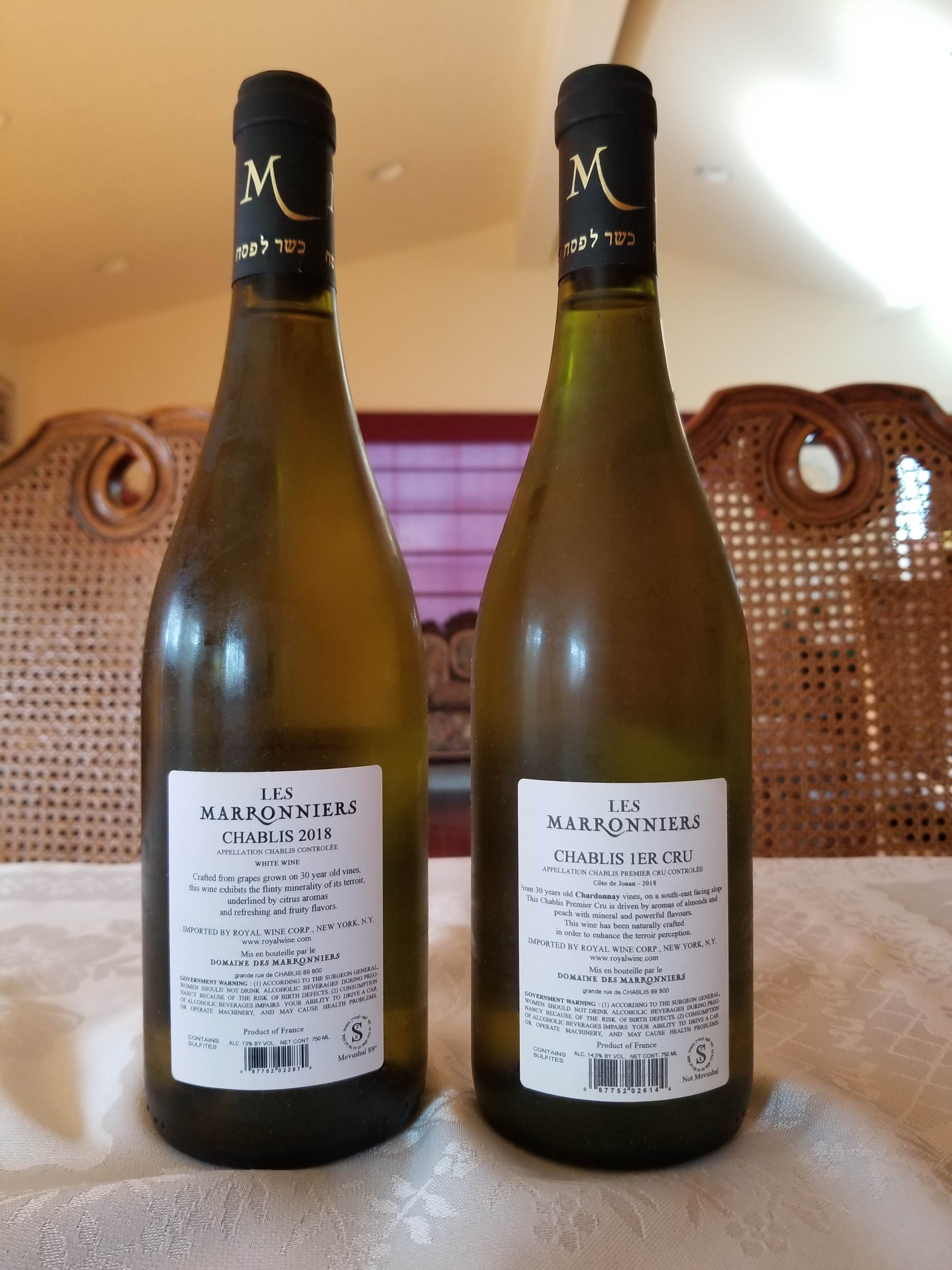






Posted in Kosher French Wine, Kosher Red Wine, Kosher Semi Sweet Wine, Kosher White Wine, Kosher Wine, Wine, Wine Tasting
Tags: 2018 Chateau Fontenil, Baron Edmond de Rothschild, Barons de Rothschild Edmond Benjamin, Blanc, Blaye, Chablis, Chateau Clarke, Chateau D'Arveyres, Chateau de Parsac, Chateau de Santenay, Chateau Du Tertre, Chateau Fourcas Dupre, Chateau Gazin Rocquencourt, Chateau Genlaire, Chateau Giscours, Chateau Greysac, Chateau Guiraud, Chateau Haut Condissas, Chateau La Clare, Chateau La Petit Chaban, Chateau La Tonnelle, Chateau Lamothe-Cissac, Chateau Le Crock, Chateau Leoville Poyferre, Chateau Les Riganes, Chateau Malartic Lagraviere, Chateau Mayne Guyon, Chateau Montviel, Chateau Moulin Riche, Chateau Piada, Chateau Rollan de By, Chateau Royaumont, Chateau Saint-Corbian, Chateau Signac, Chateau Tour Seran, Château Lascombes, Chevalier de Lascombes, Cote de Jouan, Coteaux du Giennois, Cotes Du Rhone, Domaine de Panquelaine, Domaine Ternynck Bourgogne, Fronsac, Grand Cru, Grand Cru Classe, Haut-Medoc, Jean-Pierre Bailly, Lalande de Pomerol, Le Classique, Les Bois de Lalier, Les Lauriers, Les Marronniers Chablis, Les Roches, Les Truffieres, Limited Edition, Listrac-Medoc, Margaux, Medoc, Mercurey, mevushal, Montagne-St-Emilion, Old Vines, Pascal Bouchard, Pavillon de Leoville Poyferre, Pessac-Leognan, Petit Guiraud, Pliocene, Pomerol, Pouilly-Fume, Premier Cru, Premier Grand Cru Classe, Prestige, QPR, Ramon Cardova, Rioja, Saint-Emilion, Saint-Estephe, Saint-Julien, Sancerre, Sauternes, Sauvignon Blanc, Sec
Tasting of Royal’s 2017 and some 2018 French wines in France
Posted by winemusings
This is my third year tasting wines with Menahem Israelievitch in Paris and it is the first one that is not related to my visit to Bordeaux three years ago, almost to the date of this tasting (give or take two weeks). Three years ago, I was given the opportunity to taste many of the 2015 and 2016 wines from the barrel at each of the wineries in Bordeaux.
The 2014 vintage to me, was crazy fun because it is less ripe than the 2015 or 2016 vintages. They were also FAR cheaper. Then you had the 2015 wines which were more expensive and far riper than the 2014 vintage. This 2016 vintage is the best of both worlds, but it comes at a crazy high price. I warned you at that time, during the epic post of my visit to Bordeaux with Mr. Israelievitch, that you better start saving your money, sadly nothing has changed about that. The REAL shocker price-wise of the 2016 vintage was Chateau Malartic, which rose to almost 150 or more a bottle! That was close to double the 2014 vintage.
In a previous post about the most recent French wines (at that time in 2017) that were arriving on the market – I already spoke about pricing and supply, so there is no need to talk that over again in this post.

While the 2015 and 2016 vintages were ripe, the 2017 vintage is not like that at all. The 2017 vintage in Bordeaux, though this is a massive simplification and generalization of the 2017 vintage, was overall less ripe than the 2015/16 vintages and maybe even in some cases a drop less than the 2014 vintage. The 2017 vintage flowered early and then the frost came, which killed off a fair amount of the fruit from the vines (Grapevines are self-pollinating and as such the flowers are an all-or-nothing situation in regards to yield). Quality itself is not affected by the early frost which froze the flowers, while the rest of the season was mostly OK, except for the late rains that diluted some of the acidity, again this is an overall generalization, with varying degrees of difference between the Chateaus.
The Mevushal push, from Royal wines, is continuing for the USA labels. More wines are being made Mevushal and while I wonder if this is good overall for myself, it makes sense for Royal wines, which in the end, I guess is what matters to them. Will this be an issue? In the past, I have found that the mevushal work of Mr. Israelievitch is top-notch, and really just ages the wine rather than ruining it.
The Mevushal wines from France for the 2017 vintage will be, the 2017 Barons Edmond et Benjamin de Rothschild, Haut-Medoc, 2017 Chateau Greysac, 2017 Chateau Chateau de Parsac, 2017 Les Lauriers, Des Domaines Edmond de Rothschild, 2017 Chateau Le Crock, 2017 Cuvee Hautes Terres, Chateau Fourcas Dupre, along with the whites wines, the 2018 Bourgogne Les Truffieres, Chardonnay, the 2018 Les Marronniers, Chablis, and the 2018 Chateau Les Riganes, Blanc.
Now does mevushal impede the long-term viability of aging in regards to the wine? Well, that too is not something that we have scientific proof on. I have tasted a mevushal 1999 Herzog Special Edition and it was aging beautifully! So, would I buy the mevushal versions of the wines I tasted below – absolutely! Would I age them? Yes, I would hold them for slightly fewer years.
Other than the mevushal aspect, there are no differences between the European version of the wines and the USA version of the wines. While that sounds obvious, I am just stating it here. The wines will be shipped now and the temperature issues that clearly affected Israel’s wines of old, have not been a factor here.
Tasting in Paris
I landed in Paris, got showered and the such, and then made my way to lunch with Menahem Israelievitch. This year I was not alone in my tasting, I was joined by Avi Davidowitz from the Kosher Wine Unfiltered blog. After lunch, we went to a lovely home to do the tasting. The wines were all laid out in the order for the tasting, and one by one we went through the 30 wines. There was one missing wine, the 2018 Chateau Genlaire, Bordeaux Superieur and two of the wines were bad, I did taste them later in the week and they are listed here as if I tasted them at the tasting.
My many thanks to Menahem Israelievitch for going out of his way to help me to taste all the current French wines from Royal Wines before they were publicly released. The labels on the pictures may not all have a kosher symbol, but that was because they rushed some of the bottles to Mr. Israelievitch before they were properly labeled with supervision symbols attached. My many thanks to Mr. Israelievitch, Royal Europe, and Royal Wines for making this tasting possible in the first place, and secondly, for taking the time to taste the wines with me.
The wine notes follow below – the explanation of my “scores” can be found here:
2018 Les Marronniers Chablis – Score: 93 (QPR madness) (Mevushal)
This wine is made with native yeasts and as little manipulation as possible. The nose on this wine is beautiful with orange blossom, yellow apple, and rosehip, with lemon curd, and yeasty and creamy notes. This is so much better than the 2016 or 2017 vintage, this is so much fun! The mouth on this medium-bodied wine is crazy fun, intense acidity, incredible salinity, piercing, almost painful, with lovely layers of lemon, grapefruit, with quince, and pie crust, with Anjou pear, and quince. The finish is long, crazy long, almost oily, mostly creamy, with baked pear and apple, cinnamon, nutmeg, and loads of mineral, with slate, rock, and saline. Bravo!! Drink until 2023 maybe 2024.
2018 Les Marronniers Chablis, Premier Cru, Cote de Jouan – Score: 92 to 93 (QPR)
The nose on this wine is closed, but it shows lovely notes of mineral, slate, blossom water, and loads of citrus, with apple, and smoke. The mouth on this medium-bodied wine is rich, layered, and impressive, with a rich oily mouthfeel, showing a lovely weight, with yellow apple, tart citrus, Asian Pear, and beautiful acidity that is well integrated with a strong mineral core, showing Orange pith, with tart citrus and slate and yellow plum, with saline, and more earth and hints of nectarines and orange. Lovely! Drink from 2020 to 2024 may be longer. Read the rest of this entry →
Posted in Kosher French Wine, Kosher Red Wine, Kosher Sparkling Wine, Kosher White Wine, Kosher Wine, Wine, Wine Tasting
Tags: Barons de Rothschild Edmond Benjamin, Blanc, Bordeaux, Bordeaux Superieur, Chablis, Champagne, Chateau de Parsac, Chateau Fourcas Dupre, Chateau Gazin Rocquencourt, Chateau Genlaire, Chateau Giscours, Chateau Haut Condissas, Chateau La Clare, Chateau Le Crock, Chateau Leoville Poyferre, Chateau Les Riganes, Chateau Moulin Riche, Chateau Rollan de By, Chateau Royaumont, Chateau Signac, Chateau Tour Seran, Chateau Trijet, Chateau Yon-Figeac, Chevalier de Lascombes, Cote de Jouan, Cotes Du Rhone, Cuvee Hautes Terres de Chateau Fourcas Dupre, Domaine Ternynck Bourgogne, Drappier, Grand Cru, Haut-Medoc, Lalande de Pomerol, Les Brulis, Les Lauriers, Les Marronniers Chablis, Les Roches, Les Truffieres, Listrac-Medoc, Margaux, Medoc, Montagne Saint-Emilion, Pessac-Leognan, Pinot Noir, Pliocene, Premier Cru, QPR, Rose de Saignee, Rothschild, Saint-Emilion, Saint-Estephe, Saint-Julien




